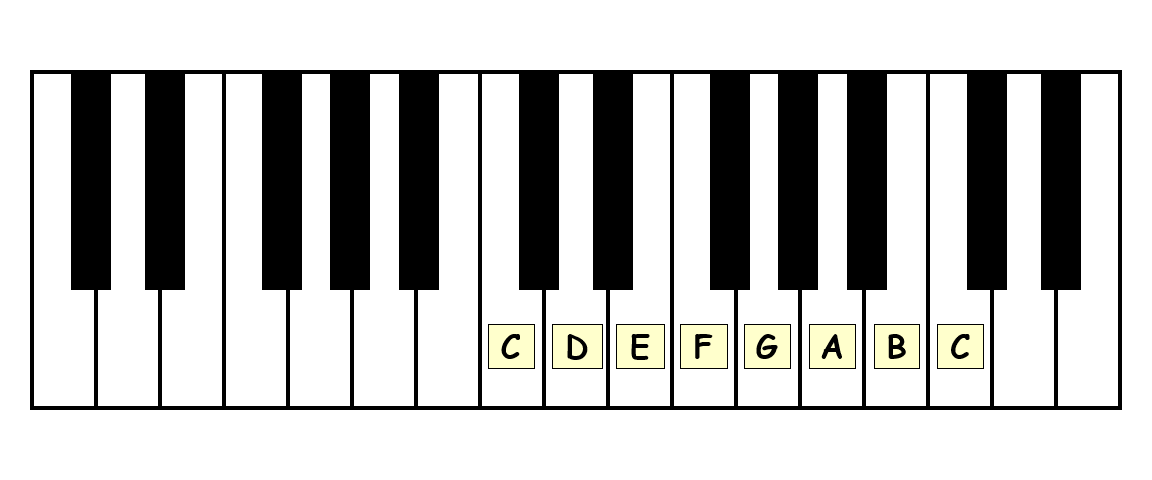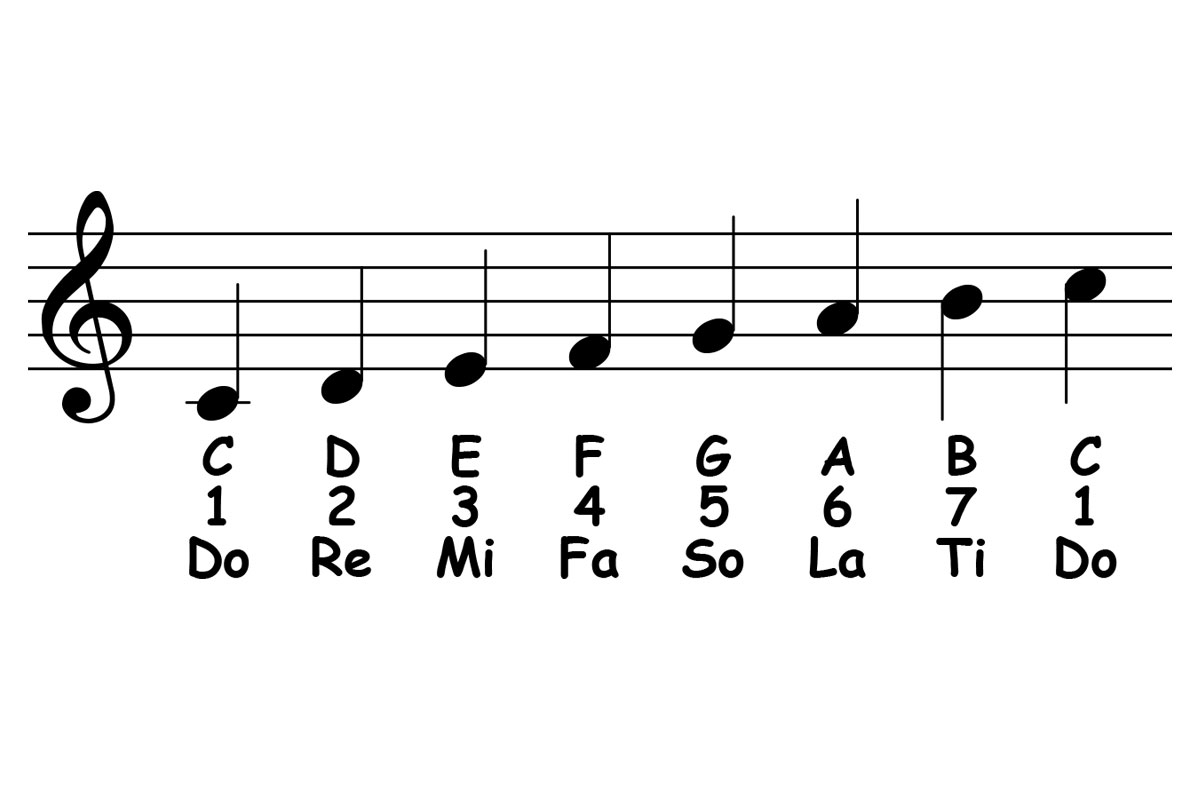Mastery of the Major Scale is absolutely essential for your development as a musician for at least two big reasons:
(1) It is widely used in music all around the world.
(2) It provides a foundation for building a rich network of scale, chord, and chord progression mastery that integrates theory and ear training.
C Major Scale Theory


- The scale structure of the Major Scale is 1-2-3-4-5-6-7-1. Always. No matter what key you are in.
- The Solfege syllables of the Major Scale are Do-Re-Mi-Fa-So-La-Ti-Do. Always. No matter what key you are in.
- The only thing that changes when you change keys are the letter names.
Major Scale Solfege Ear Training
Reading, playing, and singing the Solfege Syllables out loud is an extremely effective way to tune up your ears and to internalize the unique sound-feeling of each note in the scale with respect to the key center Do. Make sure to do this slowly enough for the unique sound-feeling of each Solfege Syllable to make a meaningful impression on your mind’s ear.
C Major Scale: Linear, Ascending…

C Major Scale: Linear, Descending…

C Major Scale: Do-X-Do, Ascending…

C Major Scale: Do-X-Do, Descending…

Note: While it’s possible to continue by singing a bunch of other musical patterns, the 80-20 Principle teaches us that a more efficient approach is to get your ear training material directly from the music that YOU want to play!
learn more…
Natural Minor Scale: Theory & Ear Training

Leave a Reply